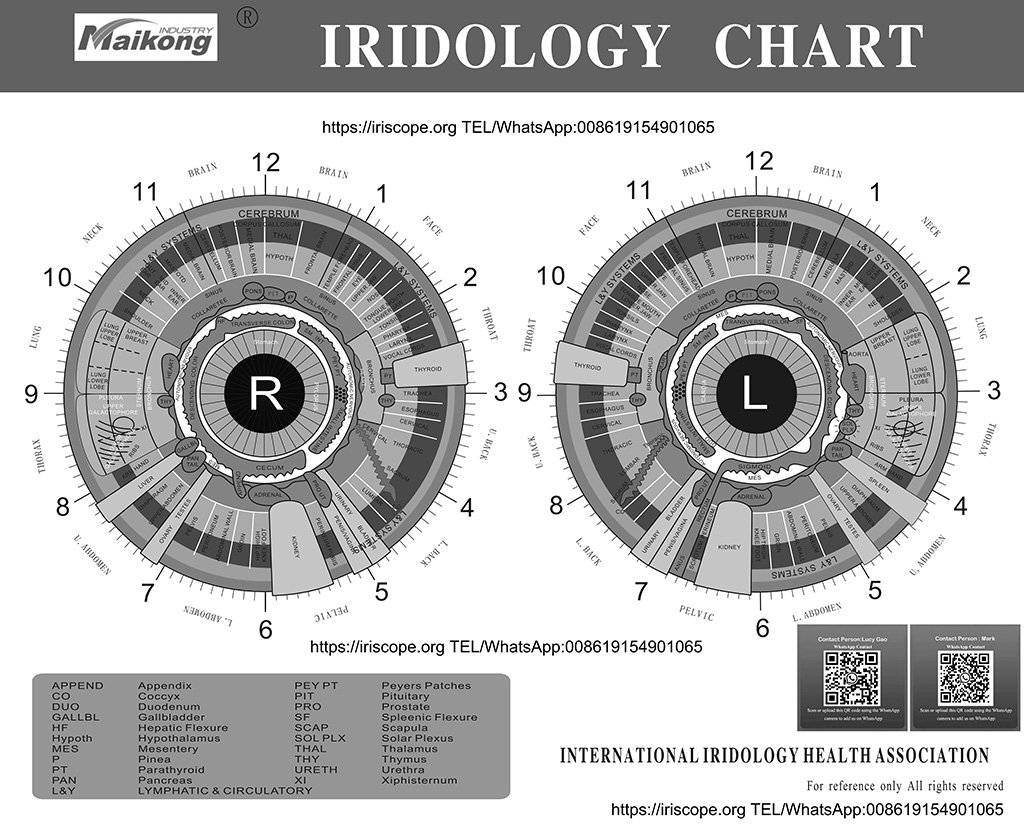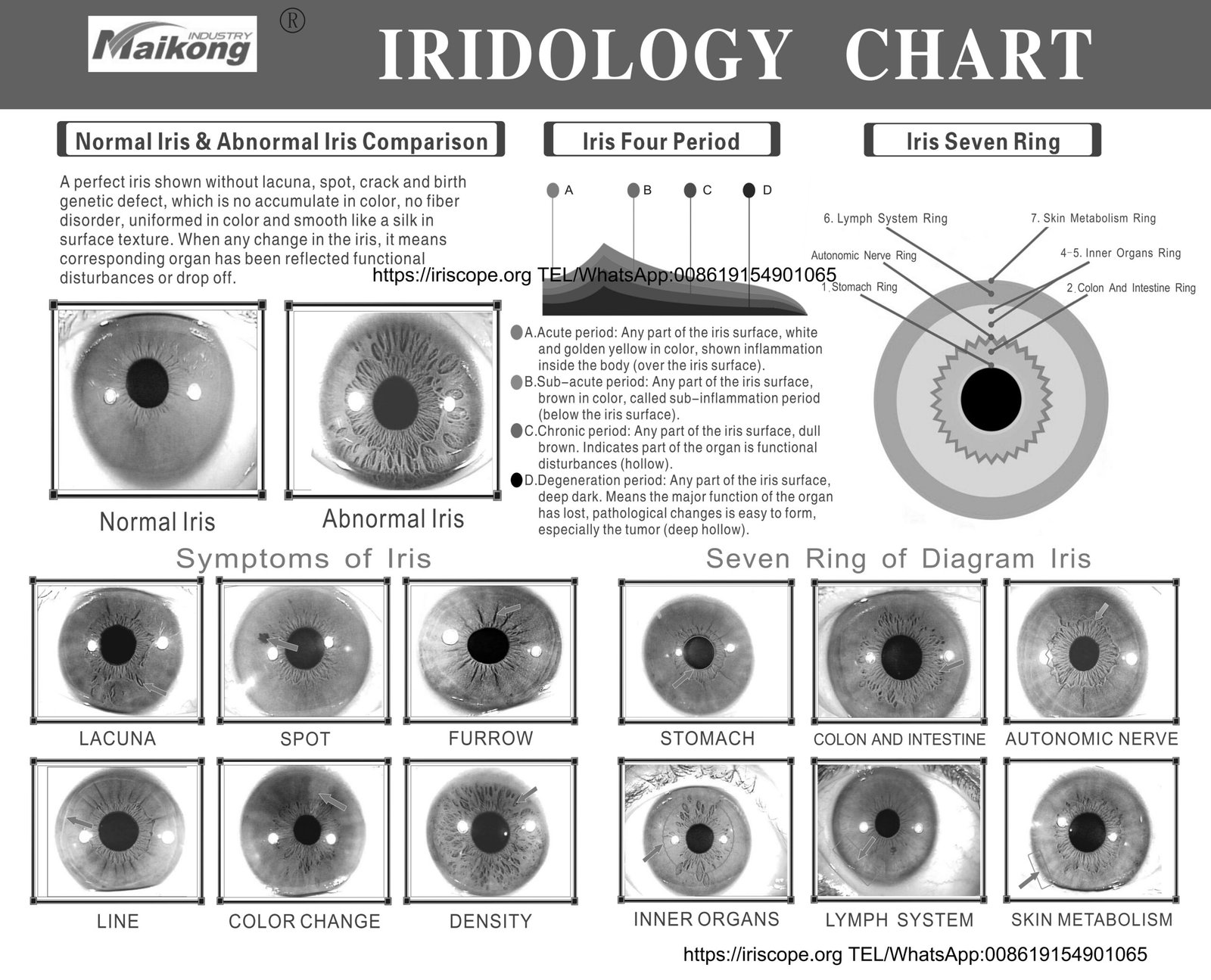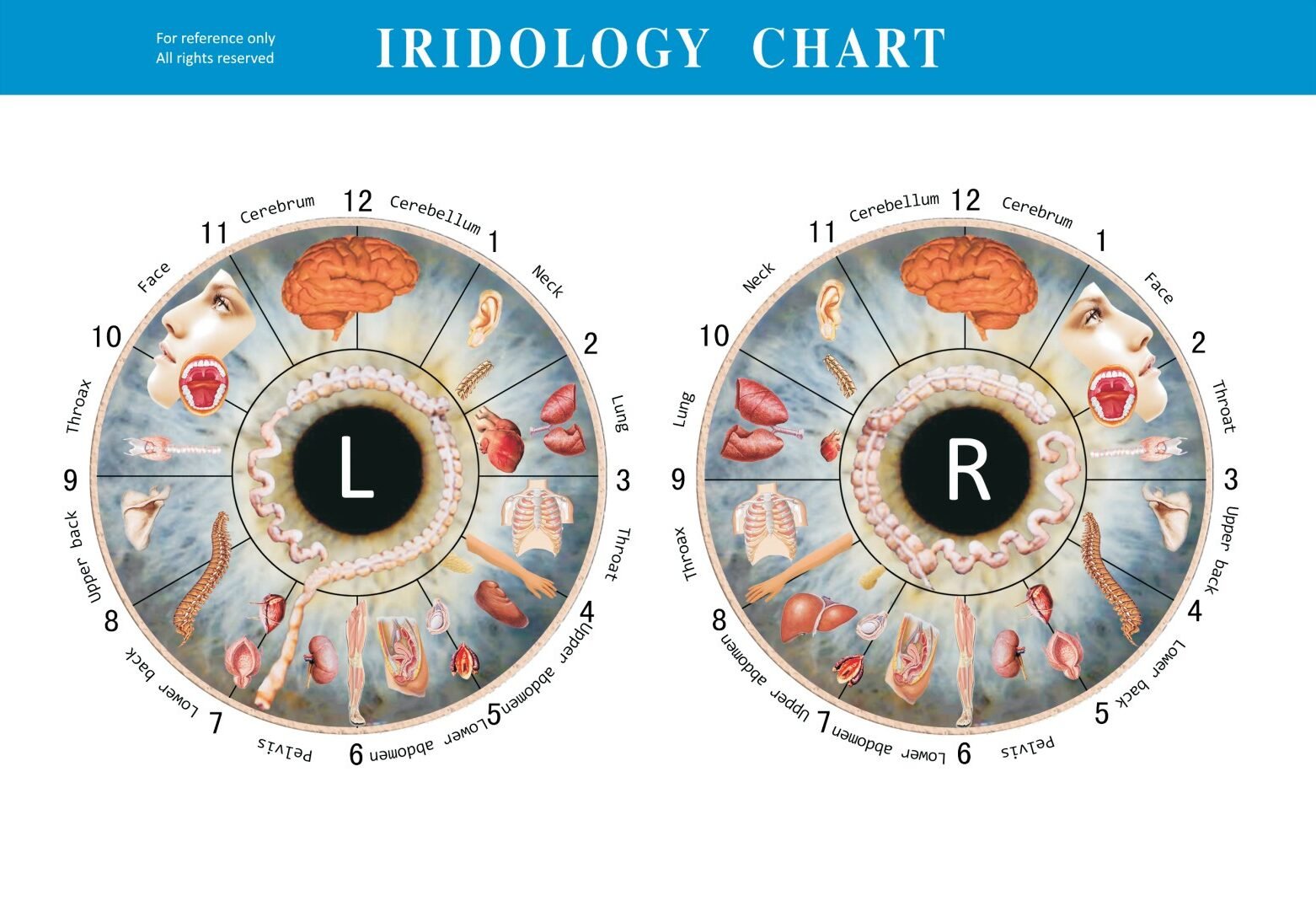The ancient practice of علم القزحية stands as one of the most intriguing diagnostic methods in natural medicine. By examining the intricate patterns, colors, and structures within the iris—the colored portion of the eye—practitioners gain valuable insights into a person’s health status and constitutional strengths and weaknesses. This holistic approach views the eyes as more than just windows to the soul; they are mirrors reflecting the complex interplay of systems throughout the human body. As we explore the philosophy behind علم القزحية, we’ll discover how this fascinating practice has evolved over centuries to become an important component of complementary and alternative medicine today.
The foundations of علم القزحية trace back thousands of years, with evidence suggesting early forms of iris analysis in ancient civilizations. However, modern علم القزحية as we know it today began taking shape in the 19th century through the pioneering work of several dedicated physicians and researchers.
The Founding Fathers of Modern علم القزحية
Dr. Ignaz von Peczely, a Hungarian physician, is widely recognized as the father of modern علم القزحية. The story begins in his childhood when he accidentally broke an owl’s leg and noticed a distinct dark mark appear in the bird’s iris. Years later, as a physician, von Peczely observed similar markings in the irises of his patients who had experienced fractures. This observation led him to develop the first iris chart in 1881, mapping connections between specific iris zones and corresponding body organs and systems.
Concurrently, a Swedish homeopath named Nils Liljequist independently developed similar theories after observing changes in his own iris following medical treatments. His detailed observations and documentation, published in his 1893 work, significantly contributed to the field’s development.


Evolution Through the 20th Century
The practice of علم القزحية gained significant momentum in the mid-20th century through the work of Bernard Jensen, an American chiropractor and nutritionist. Jensen refined existing iris charts and developed comprehensive analysis methods that are still widely used today. His approach emphasized the connection between iris signs and nutritional needs, establishing علم القزحية as an important tool in preventative health care.
Throughout Europe, particularly in Germany, علم القزحية continued to develop with increasing sophistication. Practitioners like Josef Deck created more detailed iris maps and analysis systems, contributing to the standardization of علم القزحية practices. Today, European countries like Germany, Russia, and Italy have integrated علم القزحية into complementary medicine more extensively than many other regions.
Fundamental Principles of علم القزحية
At its core, علم القزحية operates on several key principles that guide practitioners in their analysis and interpretation of iris signs. Understanding these foundational concepts is essential for appreciating the philosophical framework of this holistic practice.
The Iris as a Microcosm of the Body
The central tenet of علم القزحية is that the iris serves as a microcosm of the entire human body. Each section of the iris corresponds to specific organs, glands, and body systems according to detailed iris charts. This mapping allows practitioners to observe changes in particular iris zones and relate them to the corresponding body areas.
Constitutional Assessment and Genetic Predispositions
علم القزحية places significant emphasis on constitutional assessment—identifying inherent strengths and weaknesses in a person’s genetic makeup. The basic iris structure, color, and fiber density are believed to reflect inherited traits and potential predispositions to certain health conditions. This constitutional approach allows practitioners to provide personalized health guidance based on each individual’s unique genetic blueprint.
The Four Levels of Manifestation
Modern علم القزحية often recognizes four levels at which health conditions manifest in the iris:
- Acute inflammatory conditions – typically appearing as white or light-colored marks
- Sub-acute conditions – showing as gray or less bright markings
- Chronic degenerative states – appearing as darker markings or lacunae (pit-like formations)
- Inherent weaknesses – visible in the basic structure and patterns of the iris fibers
By identifying these different manifestations, practitioners can assess not only current health issues but also the progression and history of conditions within the body.
Enhance Your علم القزحية Practice
Discover our professional-grade iridology cameras and software designed for accurate iris analysis and patient assessment.
Explore Our Equipment
علم القزحية Methodology and Diagnostic Approach
The practice of علم القزحية involves specific methodologies and techniques for examining and interpreting iris signs. Understanding these approaches provides insight into how practitioners utilize this diagnostic tool in clinical settings.
Examination Techniques in علم القزحية
Professional علم القزحية assessment begins with proper examination of the iris using specialized equipment. High-resolution iris cameras (iriscopes) allow practitioners to capture detailed images of both irises. These images are then analyzed either manually or with the assistance of specialized علم القزحية software that can help identify and categorize various iris signs.
Proper lighting conditions are crucial for accurate iris assessment. Natural daylight or full-spectrum lighting provides the best conditions for observing true iris colors and subtle markings. Practitioners typically examine both irises, as the left iris generally corresponds to the left side of the body and the right iris to the right side, with some overlap for central organs and systems.
Interpreting Iris Signs and Markings
علم القزحية practitioners analyze various aspects of the iris, including:
- Iris fiber structure and density
- Color variations and pigmentation
- Lacunae (pit-like formations)
- Radii solaris (spoke-like lines)
- Psora (toxic settlement spots)
- Lymphatic rosary patterns
- Nerve rings (stress rings)
- Pupil size, shape, and border integrity
Each of these features provides specific information about different aspects of health. For example, nerve rings (concentric circles in the iris) often indicate stress levels and nervous system tension, while lacunae may suggest weaknesses or dysfunction in specific organs depending on their location in the iris.
Integration with Other Assessment Methods
Most modern علم القزحية practitioners integrate iris analysis with other assessment methods for a comprehensive health evaluation. This may include health history questionnaires, nutritional assessments, physical examinations, and sometimes laboratory testing. This integrated approach allows practitioners to correlate iris findings with other clinical data, providing a more complete picture of the individual’s health status.
علم القزحية in Clinical Practice
The application of علم القزحية in clinical settings demonstrates its practical value as a holistic assessment tool. Understanding how practitioners utilize iris analysis in their work illuminates the real-world benefits and applications of this approach.
Case Assessment and Health Evaluation
In clinical practice, علم القزحية serves as a valuable screening tool that can highlight areas requiring attention before symptoms become pronounced. Practitioners typically begin with a comprehensive iris assessment, documenting observations about constitution, inherent strengths and weaknesses, stress patterns, and potential areas of concern.
This initial assessment provides a foundation for understanding the individual’s health terrain and guides further investigation. By identifying constitutional tendencies and potential problem areas, practitioners can develop targeted questions and assessments to explore these areas more thoroughly.
Preventative Health Applications
One of the most valuable aspects of علم القزحية is its potential for preventative health applications. By identifying constitutional weaknesses and early signs of imbalance, practitioners can recommend targeted preventative measures before clinical symptoms develop.
For example, if the iris shows signs of inherent digestive system weakness, the practitioner might recommend specific dietary modifications, digestive support supplements, and lifestyle practices to strengthen this system and prevent potential future problems. This preventative approach aligns perfectly with the philosophy of natural medicine, which emphasizes maintaining health rather than merely treating disease.
“علم القزحية allows us to see not just where a person is in their health journey, but where they might be headed if current patterns continue. This foresight is invaluable for true preventative healthcare.”
– Dr. Ellen Jensen, Modern Iridology Practitioner
Monitoring Health Progress
Another important application of علم القزحية in clinical practice is monitoring health progress over time. While the basic constitutional patterns in the iris remain relatively stable, certain iris signs can change as health improves or deteriorates.
By documenting iris conditions with high-resolution photography and comparing images over time, practitioners can observe changes that may reflect the effectiveness of therapeutic interventions. This provides both the practitioner and client with visual feedback about progress and helps guide ongoing treatment strategies.
Professional علم القزحية برمجة
Track patient progress with our advanced iridology software. Document changes, generate reports, and maintain comprehensive patient records.
Learn About Our Software
The Science Behind علم القزحية: Research and Perspectives
The scientific standing of علم القزحية has been a subject of ongoing discussion and research. Understanding the current scientific perspectives helps practitioners and clients alike approach this modality with appropriate context and expectations.
Current Research in علم القزحية
Research into علم القزحية has produced mixed results. Some studies have questioned the reliability of iris analysis for diagnosing specific medical conditions, while others have shown promising correlations between certain iris signs and health parameters.
Recent research has focused on using advanced imaging technology and computer analysis to bring greater objectivity to iris assessment. These approaches aim to identify consistent patterns that may correlate with specific health conditions or physiological states. For example, some studies have explored correlations between iris features and constitutional tendencies in traditional medicine systems like Ayurveda and Traditional Chinese Medicine.
Integrating Traditional Wisdom with Modern Understanding
Many modern practitioners approach علم القزحية as a bridge between traditional observational medicine and contemporary health science. Rather than viewing it as a standalone diagnostic method, they integrate iris analysis with other assessment tools and current understanding of physiology and pathology.
This integrated approach acknowledges both the traditional wisdom embedded in علم القزحية and the importance of scientific validation. It recognizes that while the iris may not directly “diagnose” specific diseases in the conventional medical sense, it can provide valuable insights into constitutional patterns, stress responses, and the body’s terrain.
Strengths of Iridology
- طريقة التقييم غير الغازية
- Provides constitutional insights
- Identifies potential areas of weakness
- Supports preventative health approaches
- Complements other holistic assessment methods
Limitations of Iridology
- Not a replacement for medical diagnosis
- Research shows mixed results for specific condition diagnosis
- Interpretation can vary between practitioners
- Requires skilled analysis and proper equipment
- Best used as part of an integrated assessment approach
Practical Approach to Evidence
For those interested in علم القزحية, a balanced approach involves recognizing both its potential value and its limitations. The most responsible practitioners clearly communicate that علم القزحية is not a replacement for medical diagnosis but rather a complementary tool that can provide additional insights into health patterns.
When approached with this understanding, علم القزحية can be a valuable component of a holistic health assessment, offering perspectives that might not be readily apparent through other methods.
Professional علم القزحية Equipment and Tools
The practice of علم القزحية has evolved significantly with advances in technology. Modern practitioners utilize sophisticated equipment that enhances the accuracy and detail of iris analysis, making this ancient art more precise and accessible than ever before.
Essential علم القزحية Equipment
Professional علم القزحية practice requires specialized equipment designed specifically for capturing and analyzing iris details. The most important tools include:
Digital Iriscopes
High-resolution digital cameras specifically designed for capturing detailed iris images. These specialized cameras feature proper magnification, lighting, and positioning systems to ensure consistent, clear iris photographs.
برامج القزحية
Specialized software programs that assist in analyzing iris photographs, mapping findings to specific body systems, and documenting observations. Advanced software may include features for comparing images over time and generating client reports.
مخططات علم القزحية
Reference charts that map iris zones to corresponding body systems and organs. These charts serve as essential guides for practitioners in interpreting iris signs and their potential health correlations.
Selecting Quality Equipment
The quality of equipment significantly impacts the accuracy and usefulness of علم القزحية assessments. When selecting professional علم القزحية equipment, practitioners should consider several key factors:
- Image resolution and clarity – Higher resolution cameras capture more detailed iris features
- Proper illumination systems – Even, consistent lighting prevents shadows and color distortion
- Ergonomic design – Equipment that is comfortable for both practitioner and client
- Software compatibility – Seamless integration between camera systems and analysis software
- Training and support – Available resources for learning to use the equipment effectively
Investing in quality equipment not only enhances the accuracy of assessments but also improves the professional image of the practice and the client experience.
احتضان حكمة علم القزحية في الممارسة الشاملة الحديثة
علم القزحية represents a fascinating bridge between ancient observational medicine and modern holistic health practices. As we’ve explored throughout this article, this eye-based assessment method offers unique insights into constitutional patterns, potential health tendencies, and the body’s overall terrain.
بينما علم القزحية continues to evolve and find its place within the spectrum of complementary health approaches, its greatest value lies in its holistic perspective—viewing the body as an interconnected system and emphasizing prevention and constitutional understanding. When practiced responsibly and integrated with other assessment methods, علم القزحية can be a valuable tool in the holistic practitioner’s toolkit.
For those interested in exploring علم القزحية further, whether as practitioners or clients, the journey begins with quality education, proper equipment, and an open yet discerning mind. The eyes truly do offer windows into aspects of our health that might otherwise remain unseen.
Begin Your علم القزحية رحلة
Discover our complete range of professional iridology equipment, software, and educational resources.
Visit Our Website




























